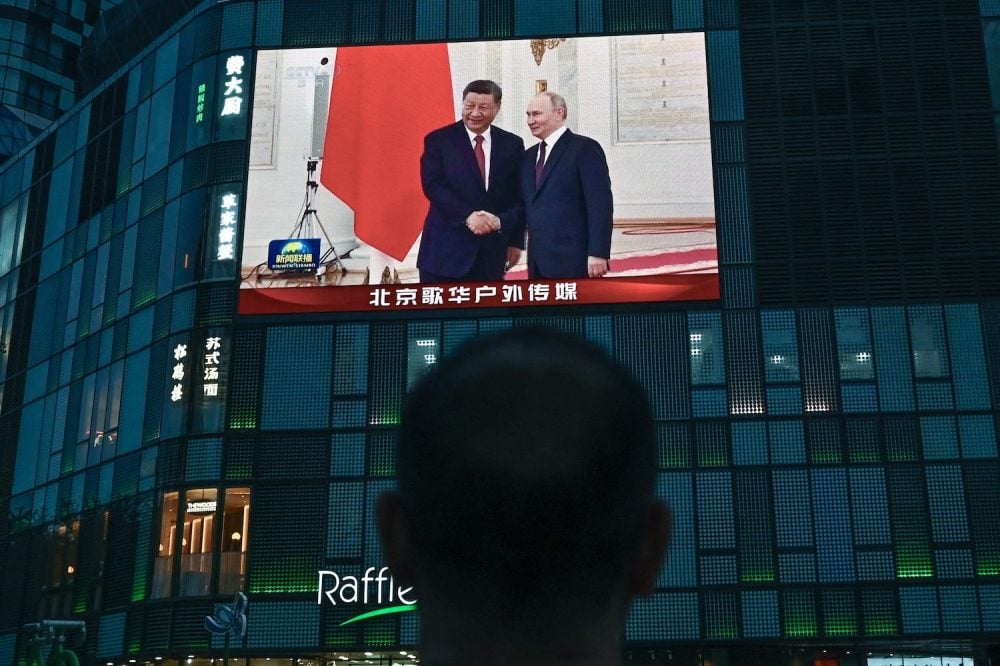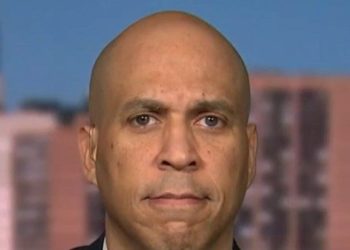This week it was reported that a senior Pentagon official ruffled his colleagues’ feathers by ordering controversial policy decisions, including cutting off aid to Ukraine, without White House approval. But, contrary to much of the reporting, this is not simply a story about personalities or policy process, but about grand strategy.
How can the United States and its allies counter simultaneous security challenges across Eurasia? The Pentagon official in question, Elbridge Colby, envisions a division of labor in which Europe takes care of Europe, while the United States pivots to deal with the bigger challenges in the Indo-Pacific.
But this approach will not work. The better strategy is for the United States to continue to lead its European allies as they step up and contribute more across Eurasia.
There is no doubt that the United States and its allies face a deteriorating security environment. Russia is engaging in a war of aggression in Ukraine that could spill across borders and result in a direct NATO-Russia clash. China is conducting regular military coercion against its neighbors and threatens to invade Taiwan. And then there are the continued threats posed by North Korea, Iran, and international terrorism.
How, then, should the United States and its allies deter and, if necessary, defeat these simultaneous threats?
There are three possible models. The first is for the United States to talk a good game about pivoting to Asia while it gets bogged down in Europe and the Middle East, all while allies free-ride on Washington’s efforts. There is widespread agreement that this model, too often reflected in past U.S. foreign policy, will not work.
The second approach is for the United States to provide leadership while stitching together its global allies to contribute to multiple efforts across Eurasia. President Donald Trump embraced this approach in his first term, and the effort continued under former President Joe Biden. Washington made much progress in helping its allies understand the global and interconnected nature of these threats and stitching North American, European, and Indo-Pacific allies together in new frameworks. Allies committed to stepping up their own defenses while also contributing to global efforts.
Trump elevated the Quad to the ministerial level and invited South Korea, Australia, and India to attend the G-7 summit. He persuaded European allies to increase defense spending, but also to ban Chinese 5G technology. In the Biden years, AUKUS and the NATO-IP4 stitched together the free world. European allies called for peace and stability in the Taiwan Strait and committed to de-risk from China, while Asian allies joined in sanctioning Russia and providing arms to Ukraine.
Many Trump 2.0 officials and Republicans in Congress want to build upon this successful legacy.
The third vision—which would be a radical break from past U.S. policy—is for an extreme division of labor. Under this model, the United States would greatly reduce its involvement in Europe so that it can husband resources for the greater threat posed by China. In America’s absence, Europe would step up and take care of itself and avoid distractions in Asia and elsewhere. After all, the logic goes, Europe has its hands full with Russia; why should it be sending military forces to the Indo-Pacific? Asian allies are similarly encouraged to stop worrying about NATO and Ukraine and focus on the China menace closer to home.
This third vision is championed by only a small minority, but some of its adherents, including Colby, occupy influential positions. It is also the vision that motivated specific policy decisions that ruffled feathers recently, including the abrupt halt to U.S. weapons shipments to Ukraine, a review of AUKUS, and the request that the United Kingdom turn around a warship headed for the Indo-Pacific. What these moves have in common is that they are designed to reduce U.S. involvement in Europe and to contain European allies to their own neighborhood.
These are not isolated incidents. Officials from several European countries tell me that the Pentagon has also asked them to stay out of Asia and the Middle East. And, for the first time in years, the 2025 NATO summit communique included no mention of China or the Indo-Pacific.
The extreme-division-of-labor strategy might make sense in theory, but it will not work in practice, for three reasons.
First, and most obviously, Eurasian threats are interconnected. The China challenge is not contained to the Taiwan Strait. It is global. We see this most clearly in Russia’s war in Ukraine. Iran and North Korea are sending Russia weapons, and China is providing Moscow with everything else it needs to sustain the war effort, including an economic lifeline, super heavy-duty trucks, and excavation equipment that Russia is using to literally dig itself into eastern Ukraine. Taiwan’s leaders understand this and have argued that the most effective way to deter China from attacking their country is for the free world to roundly defeat Russian President Vladimir Putin in Ukraine.
There is a second reason the division-of-labor strategy will not work: Europe cannot lead Europe. Effective trans-Atlantic security requires American leadership. If Washington pivots to Asia and abandons Europe, there is no other country that can organize allies in a way that ensures the United States’ important interests in Europe are looked after.
Europe may be relatively less important than it once was, but it is still America’s no. 1 trade and investment partner, and the average American benefits greatly from peace, stability, and prosperity in the continent.
The idea that Europe can take care of itself rests on the conceptual mistake that “Europe” exists as a coherent strategic actor. It does not. As Henry Kissinger once joked, when you want to talk to Europe, who do you call?
Europe is a collection of 30-plus different countries with different interests and policy inclinations. It takes a superpower to bring them together around a common mission.
Absent the United States, there is no other country with the power and the goodwill to orchestrate a coherent approach to European security. Some countries, like France, might want to claim the mantle of European leadership, but one can only lead if others are willing to follow.
To be sure, America’s image has been tarnished in the minds of many European politicians and their constituents. But Europe’s security establishment—especially in vulnerable front-line states—knows that Putin only respects American power. They want continued American leadership and presence and do not trust their security to their friends in Western Europe.
Instead of Europe taking care of itself, the withdrawal of the United States risks chaos. Thirty-plus smaller countries might adopt 30-plus different approaches. Some might spend more on defense, but others will not, and still others will sell out American interests in side deals with Putin and Chinese President Xi Jinping.
The division-of-labor proponents are right that the United States should prioritize China and European allies must step up and provide the bulk of Europe’s conventional forces. But it errs in failing to understand that Washington must continue to provide leadership, nuclear deterrence, and enough of a forward conventional military presence to give it skin in the game.
American power is the glue that binds trans-Atlantic security.
There is a third and final reason why an extreme division of labor will not work: The United States needs Europe’s help to counter China. To be sure, Estonia cannot send an aircraft carrier to Taiwan in the event of World War III. However, the U.S. competition with China is playing out in all domains, and Europe remains an economic, regulatory, diplomatic, and moral superpower. After all, NATO’s non-U.S. members make up nearly 20 percent of real global GDP.
To effectively de-risk from China or win the global technology competition, therefore, Washington needs help from Brussels. Washington can enforce perfect export controls to prevent Chinese theft of American technology, for example, but if Beijing just turns around and buys advanced tech from Europe, then the strategy will not work.
European soft power and moral authority can also make the rhetorical case against China’s unfair trade practices, abuse of international institutions, and gross human rights violations in diplomatic fora.
Europe also helps to sustain military deterrence against China. Simple diplomatic statements over the past several years about peace and stability in the Taiwan Strait remind China that invading Taiwan would cause problems, not just with Taiwan or the United States, but the entire free world. The threat of European sanctions can make Xi think twice about attacking Taiwan. Washington wants Europe to step up defense industrial production to arm NATO, but a revived European defense industry can also serve as an arsenal of democracy during a major war in the Indo-Pacific. Symbolic shows of force, such as British warships or Lithuanian special operations forces in the Indo-Pacific further reinforce for Xi the China-versus-free world framing without meaningfully sapping Europe’s ability to defend itself.
But don’t take it from me. U.S. Secretary of Defense Pete Hegseth reports that the country’s military leaders in the Indo-Pacific tell him China “does not appreciate” the presence of European military forces in Asia, and that if this shapes Chinese decision-making, then “that’s useful.” Or, as Matthew Whitaker, Trump’s ambassador to NATO, tweeted, “What happens in the Indo-Pacific matters for transatlantic security. That’s why NATO works with partners globally.”
In short, an extreme division of labor for dealing with Eurasian threats is a bad idea. The threats are interconnected; “Europe” cannot take care of itself; and Washington needs Europe’s help to defeat China. Washington’s adversaries are under no illusions. They are cooperating to wage a global campaign to defeat the United States. Placing threats and allies in neat regional boxes does not even really work in a game of Risk. In the more complicated real world, a superpower with worldwide interests must lead a global coalition of allies to defeat an axis of interconnected Eurasian enemies.
The post A Division of Labor Between Europe and Asia Won’t Work appeared first on Foreign Policy.




